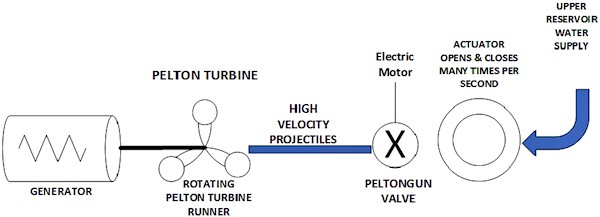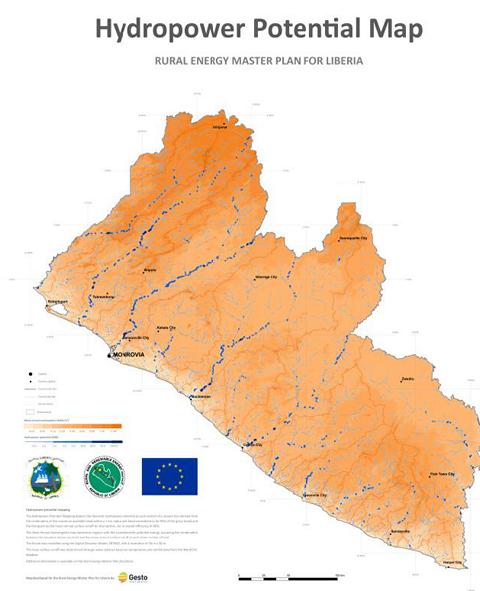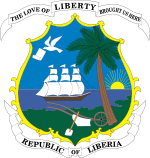What is Hydropower?
A mass of water that quickly moves down a height difference contains energy. A waterwheel or turbine can harvest this energy. The waterflow drives the waterwheel and this rotation either drives machinery directly (e.g. mill, pump, hammer, thresher, ...) or is coupled with a generator which converts the kinetic energy into electricity.
Components of a Hydropower System

Hydropower currently contributes to 16% of worldwide electricity generation.
Hydropower Plants
Hydropower plants are tailored to the specific environment in which they are built. Their size and function can vary widely, but the vast majority fall into three categories: run of river, reservoir, and pumped storage.
- A run of river plant harnesses energy mainly from river flows, and as such can have significant daily, monthly, seasonal and yearly variations in volume. It also has very limited storability of water.
- A reservoir stores water and thus provides electricity on demand. Very large reservoirs can retain months or years of inflows and can also provide flood protection and irrigation to the local area. Most reservoirs are artificially created by building a dam to control the river flow, but natural lakes can also function as reservoirs.
- A pumped storage plant is a turbine that pumps water from a lower reservoir to be stored to a higher reservoir for when potential energy use is demanded. Water is pumped up during periods where electricity supply exceeds demand. When needed, the water is then released from the upper reservoir into the turbine by way of gravity.
The most important drivers for hydropower development are:
- Sites that will have long and productive local generation capabilities in terms of water flow, as well as low lifecycle costs. Many sites built 50 to 100 years ago are still in operation today and have low operating costs.
- Desires for reliable and clean electricity production with minimal service interruptions.
- Cost-effective upgrades, redevelopments and improvements to existing plants as new technologies emerge to increase the profitability of hydropower plants. This can involve flexible operations that will maximize plant efficiency when variations in volume occur, as well as the ability to store energy in order to balance the seasonal load on the energy grid.
Hydropower Potential in Liberia
Liberia has a rainy season between April and November, various rivers and a long sea coast. Yearly rainfall is around 510 cm (200 in) on the coast, 200 cm (80 in) inland. Average relative humidity is about 82% in the coastal area during the rainy season, and 78% to 50% in the dry season.
According to the Rural Energy Strategy and Masterplan, hydropower potential of 2 300 MW has been identified in Liberia. This potential is mainly on large rivers with high mean annual flow and low heads. Several locations have heads and flows above 50 m3/s, thus good for above 5 MW hydro schemes. However, the potential varies between rainy season and dry season.
For more information see Energypedia on Hydropower.
Several projects in Liberia use hydropower to generate electricity.


